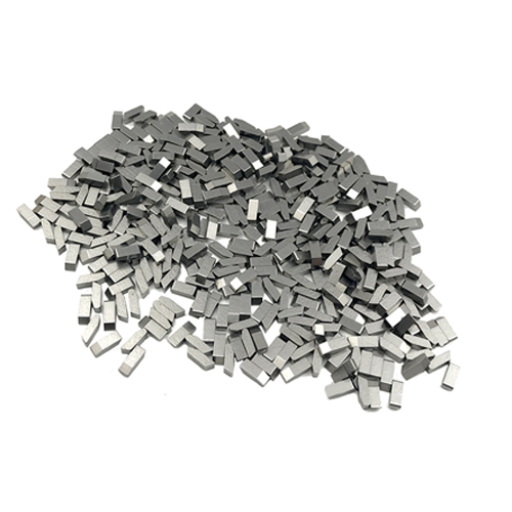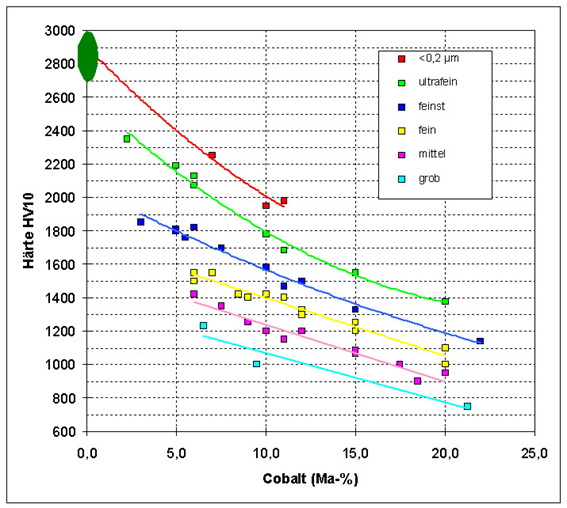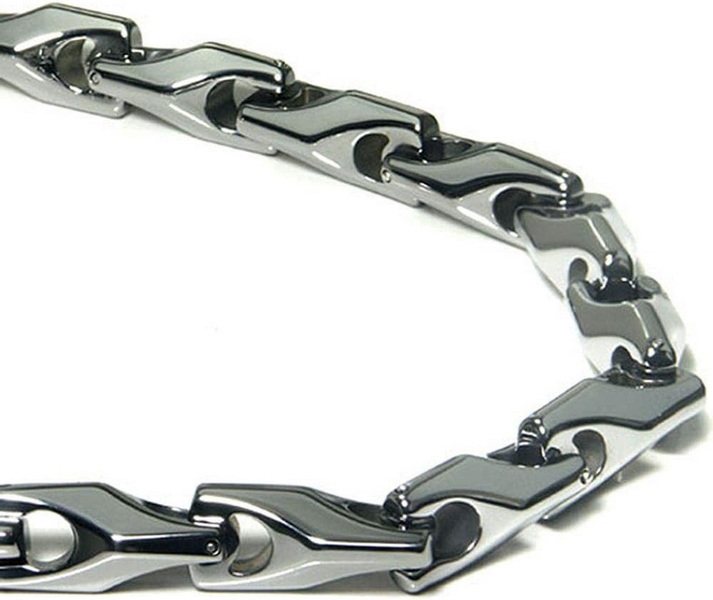Content Menu
● Composition and Properties
● The Role of Cobalt in Tungsten Carbide
● Manufacturing Process
● Advantages and Disadvantages of Tungsten Carbide
● Applications Across Industries
>> Aerospace and Aviation
>> Oil and Gas Production
>> Manufacturing and Industrial Processing
>> Power Generation
>> Surgical Instruments
>> Mining
>> Electronics
>> Trekking and Ski Poles
>> Jewelry
● Health and Environmental Considerations
● Future Trends in Tungsten Carbide Development
● Conclusion
● FAQ
>> 1. What is the primary role of cobalt in tungsten carbide?
>> 2. How does the cobalt content affect the properties of tungsten carbide?
>> 3. What are the main advantages of using tungsten carbide?
>> 4. What are some limitations associated with using Tungsten Carbide?
>> 5. In which industries is Tungsten Carbide commonly used?
● Citations:
Tungsten carbide (WC), particularly tungsten carbide cobalt (WC-Co), is a composite material celebrated for its exceptional hardness, wear resistance, and versatility across numerous industrial applications. Often referred to as cemented carbide, this material typically comprises 70-97% tungsten carbide, with cobalt making up the remaining portion. The specific ratio between tungsten carbide and cobalt can be adjusted to achieve desired material properties. Higher tungsten carbide content generally enhances hardness and wear resistance, while increased cobalt content improves toughness and shock resistance.

Composition and Properties
Tungsten carbide is a chemical compound consisting of equal parts of tungsten and carbon atoms. In industrial applications, the most common form contains approximately 94% tungsten and 6% carbon by weight. Cobalt acts as a metallic binder in cemented carbides, holding the tungsten carbide particles together. Researchers have explored using other metals like nickel and iron as binders, but cobalt remains irreplaceable due to its unique properties.
Key properties of tungsten carbide cobalt include:
- High Hardness: Offers excellent resistance to wear and abrasion.
- Wear Resistance: Extends the lifespan of components in harsh environments.
- Thermal Stability: Maintains structural integrity at high temperatures.
- Chemical Resistance: Resists degradation from acids and alkaline solutions.
- Compressive Strength: Suitable for high-pressure applications.
- Dimensional Stability: Ensures consistent performance over time.
- Erosion Resistance: Protects against particle-laden fluids.
- Thermal Conductivity: Facilitates heat dissipation.
- High Density: Provides stability in high-impact environments.
- Corrosion Resistance: Enhances performance and longevity.
The Role of Cobalt in Tungsten Carbide
Cobalt plays a crucial role in enhancing the microstructure of tungsten carbide, acting as an adhesive that reinforces the material. Without an intermediate binder like cobalt, tungsten carbide particles would be difficult to join together. The liquid phase of cobalt helps to form a composite of metal and ceramic, thereby improving the overall strength and durability of the material.
The amount of cobalt present in tungsten carbide can significantly affect its properties:
- Higher Cobalt Content: Results in a softer but more impact-resistant material.
- Lower Cobalt Content: Leads to a harder material with reduced impact resistance.
The most widely used tungsten carbide rods typically contain 10wt% of cobalt, providing a balance of toughness and hardness suitable for cutting tools requiring high wear resistance and impact strength. Depending on the application, the proportion of cobalt can vary, with common options including 5wt%, 10wt%, 12wt%, and 20wt%.
Manufacturing Process
Tungsten carbide powder is produced by reacting tungsten metal (or powder) and carbon at high temperatures, typically between 1,400°C and 2,000°C. Alternative methods include a lower-temperature fluid bed process using tungsten metal or blue WO3 with CO/CO2 gas mixture and H2 gas between 900°C and 1,200°C.
The cemented form of tungsten carbide is prepared using powder metallurgy techniques. This involves mixing powdered tungsten carbide with a binder metal (usually cobalt), pressing the mixture, and then sintering it at temperatures between 1,400°C and 1,600°C. During sintering, the binder melts, wets, and partially dissolves the tungsten grains, effectively binding them together.
Advantages and Disadvantages of Tungsten Carbide
Advantages:
- Exceptional Wear Resistance: Significantly extends the life of components.
- Excellent Thermal Stability: Reduces thermal expansion issues.
- Outstanding Chemical Resistance: Protects against acids and alkaline solutions.
- High Compressive Strength: Enables use in high-pressure environments.
- Remarkable Dimensional Stability: Ensures consistent performance over time.
- Superior Erosion Resistance: Ideal for particle-laden fluid environments.
- Excellent Thermal Conductivity: Facilitates heat dissipation.
Disadvantages:
- Higher Initial Cost: More expensive than traditional coatings like chrome plating.
- Limited Ductility: Requires careful design to prevent brittle failure.
- Complex Application Processes: Requires specialized equipment and expertise.
- Poor Oxidation Resistance: Not suitable for use above 600°C in oxygen-containing environments.
- Weight Considerations: High density can be a drawback in some applications.
- Specialized Maintenance: Requires specific maintenance procedures for coated components.

Applications Across Industries
Tungsten carbide is utilized across a wide range of industries due to its unique properties:
Aerospace and Aviation
In aerospace applications, tungsten carbide is used to protect critical engine components from wear. For instance, turbine blades made from this material can withstand extreme conditions while maintaining their structural integrity. Additionally, compressor seals made from tungsten carbide ensure efficient performance by preventing leaks under high pressure.
Oil and Gas Production
In the oil and gas industry, drilling equipment such as drill bits made from tungsten carbide are essential for penetrating hard rock formations. The wear resistance of these bits allows them to operate efficiently over extended periods without significant degradation. Furthermore, valve stems and pump components made from tungsten carbide are designed to handle harsh environments where corrosion could be an issue.
Manufacturing and Industrial Processing
Tungsten carbide cutting tools are widely used in manufacturing due to their ability to maintain sharp edges even under high-speed machining operations. These tools are employed in various processes such as milling, turning, drilling, and grinding. Additionally, components like mixers, extruders, and material handling equipment benefit from the wear resistance offered by tungsten carbide coatings.
Power Generation
In power generation facilities, turbines are subject to erosion caused by steam flow or particulates in gas streams. Tungsten carbide coatings provide protection against this erosion while maintaining thermal efficiency. The durability offered by these coatings ensures that turbines can operate at optimal performance levels for extended periods.
Surgical Instruments
In the medical field, surgical instruments made from tungsten carbide exhibit superior hardness compared to stainless steel alternatives. This hardness allows for precise cutting while maintaining sharpness over time. Additionally, the corrosion resistance provided by tungsten carbide ensures that these instruments remain sterile during procedures.
Mining
Mining tools such as drill bits or rock crushers made from tungsten carbide are designed to withstand extreme conditions encountered during excavation processes. The exceptional wear resistance ensures that these tools remain effective even when exposed to abrasive materials found underground.
Electronics
In electronics manufacturing processes where precision is paramount, tungsten carbide is employed for its durability. Components that require tight tolerances benefit from the stability offered by this material during machining operations.
Trekking and Ski Poles
Outdoor enthusiasts often rely on trekking poles or ski poles reinforced with tungsten carbide tips for added durability against rough terrain or icy conditions. These tips provide excellent traction while resisting wear over time.
Jewelry
Tungsten carbide has gained popularity in jewelry making due to its hardness and scratch resistance properties. Wedding bands crafted from this material maintain their polished appearance longer than traditional gold or platinum rings.
Health and Environmental Considerations
Tungsten carbide-cobalt mixtures exhibit higher toxicity compared to cobalt alone. Cobalt is classified as "possibly carcinogenic" to humans by organizations such as the International Agency for Research on Cancer (IARC). The enhanced toxicity associated with tungsten carbide-cobalt is primarily attributed to the cobalt fraction.
Cobalt is also considered hazardous to both human health and the environment; thus strict regulations govern its handling during production processes. These regulations extend not only to cobalt but also encompass all forms of tungsten carbide-cobalt composites due to potential risks associated with exposure through inhalation or skin contact during manufacturing operations.
Future Trends in Tungsten Carbide Development
As industries continue evolving towards sustainability practices while maintaining performance standards required for modern applications; research into alternative binders beyond just cobalt has gained momentum recently within academic circles focused on materials science research efforts aimed at developing eco-friendly alternatives without compromising quality standards expected from traditional cemented carbides like WC-Co composites.
Innovations such as using bio-based binders derived from renewable resources offer promising avenues toward reducing reliance on conventional metals while enhancing overall product sustainability profiles across various sectors including automotive manufacturing where lightweight materials are increasingly sought after alongside improved energy efficiency metrics throughout production cycles.
Conclusion
In summary, tungsten carbide often contains cobalt as a crucial binding agent that enhances its overall performance. Cobalt improves the material's toughness, impact resistance, and microstructure, making it suitable for a wide array of demanding applications across various industries. While tungsten carbide offers numerous advantages—including exceptional hardness—its limitations must also be considered alongside health/environmental implications associated with its use in order ensure safe effective utilization practices moving forward into future developments within this dynamic field.

FAQ
1. What is the primary role of cobalt in tungsten carbide?
Cobalt acts as a metallic binder in tungsten carbide, holding the tungsten carbide particles together. Its liquid phase reinforces the microstructure forming a composite of metal ceramic which improves overall strength durability of material.
2. How does the cobalt content affect the properties of tungsten carbide?
Higher cobalt content makes the tungsten carbide material softer but more impact-resistant whereas lower cobalt content results in harder materials with reduced impact resistance characteristics leading towards different applications based upon requirements needed per industry sector involved.
3. What are the main advantages of using tungsten carbide?
The main advantages include exceptional wear resistance thermal stability chemical resistance high compressive strength remarkable dimensional stability superior erosion resistance excellent thermal conductivity among others which make it ideal choice across multiple sectors requiring durable solutions under challenging conditions faced regularly during operations performed daily within respective fields engaged actively today!
4. What are some limitations associated with using Tungsten Carbide?
Limitations include higher initial cost limited ductility complex application processes poor oxidation resistance above certain temperatures weight considerations due density specialized maintenance requirements needed ensure optimal performance levels maintained throughout lifespan products manufactured utilizing this innovative technology developed over years research development efforts undertaken globally!
5. In which industries is Tungsten Carbide commonly used?
Tungsten Carbide finds application across diverse industries such as aerospace oil gas production manufacturing power generation surgical instruments mining electronics trekking ski poles jewelry among others showcasing versatility capabilities offered through utilization modern engineering advancements achieved over time!
Citations:
[1] https://www.samaterials.com/tungsten-carbide-cobalt-an-overview.html
[2] https://www.linde-amt.com/resource-library/articles/tungsten-carbide
[3] https://www.cobaltinstitute.org/essential-cobalt-2/cobalt-innovations/hard-metal/
[4] https://www.tungco.com/insights/blog/5-tungsten-carbide-applications/
[5] https://www.baojetools.com/cobalt-plays-an-important-role-in-tungsten-carbide-cutting-tools/
[6] https://www.carbide-usa.com/top-5-uses-for-tungsten-carbide/
[7] https://nanopartikel.info/en/knowledge/materials/tungsten-carbide-cobalt/
[8] https://www.azom.com/properties.aspx?ArticleID=1203
[9] https://en.wikipedia.org/wiki/Tungsten_carbide
















